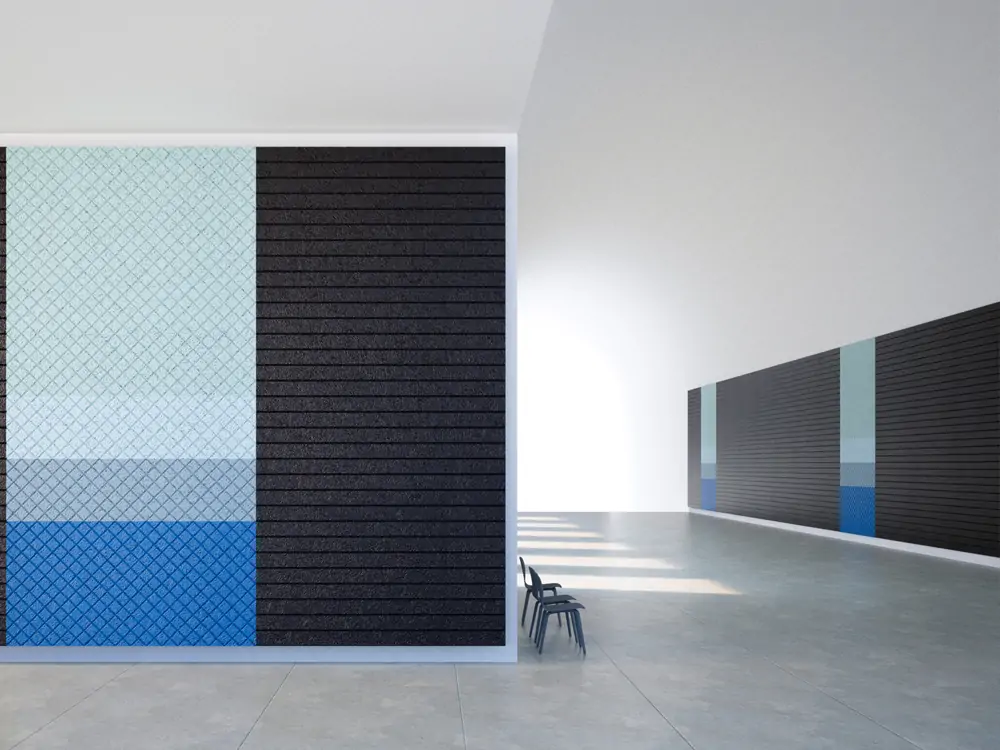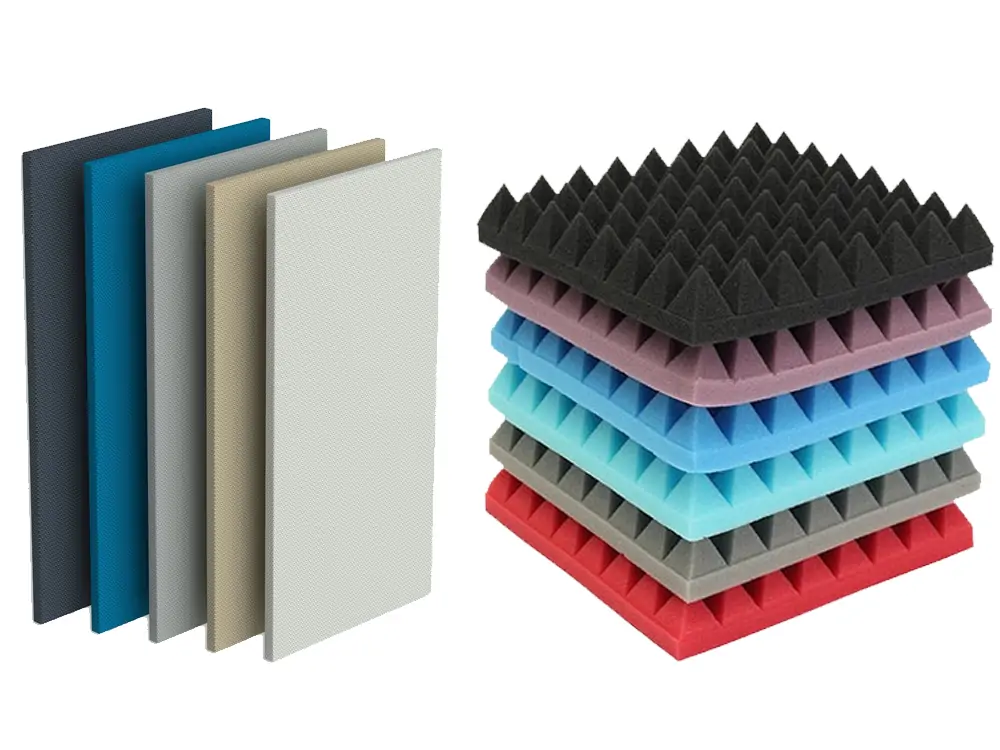Creating a sound-friendly atmosphere is crucial for various spaces, like offices, homes, studios, and workplaces. Appropriate acoustic systems will significantly improve the quality of sound. These systems make sound controlled and clear. Acoustic panels and acoustic foam are the famous ways to achieve the desired sound quality.
Both sound-improving options can reduce outer noise and absorb sound waves. However, they have different properties as per requirements. Acoustic panels are considered suitable for their attractive appearance in large areas. On the other hand, Acoustic foams are known for their flexibility and lower price options in small places. Choosing the appropriate acoustic action will enhance your sound experience. Also, it enables you to boost the environment of your comfort zone.
Let’s examine all the differences between acoustic panels and acoustic foam, comparing their merits and demerits so you can better understand what you want.
Let’s Go!

Acoustic Panels: A Comprehensive Overview
Acoustic panels are made of sound-absorbing materials to advance acoustics by reducing noise and echo. They are highly essential for enhancing sound quality. It is suitable for places like theaters and offices. It also suits recording studios, conference rooms, and small cinemas. Below, we provide everything the reader might want to know about these acoustics options.
Function of Acoustic Panel:
Acoustic panels absorb outer sound waves. They also soak up unwanted noise and reverberation. They reduce echo. By implementing this option in a target area, it will enhance the clarity of sound waves.
Materials of Acoustic Panel:
Acoustic panels are made up of materials, which include foam, mineral wool, and fiberglass. These materials are selected to increase their sound-absorbing abilities and fire-resistant characteristics.
Installation:
You can install acoustic panels on ceilings, walls, and even free-standing partitions in rooms or baffles. Putting up these panels is simple. You just need adhesive, brackets, and hanging systems.
Design Considerations:
When selecting these panels, consider the room. Think about its shape, size, and, most importantly, your main purpose. Acoustic panels must be installed to cover specific issues. These issues include echoes, reflections, or reverberation.
Types of Acoustic Panels:
-
Absorptive Panels:
They are designed from materials like fiberglass, fabric, or foam. They absorb sound waves and don’t allow them to bounce in the area.
-
Diffusive Panels:
These panels are installed to scatter sound waves. They help to create even sound distribution in a room. It prevents dead spots and overly reflective areas.
-
Decorative Panels:
These panels are available in different colors, shapes, and sizes. It can match the room’s interior while still absorbing sound waves well.
Advantages of Acoustic Panels
-
Improved Sound Quality:
These panels absorb sound waves and reverberation in the area. They also reduce echo. It results in crisper and clear sound for music and other audio content.
-
Enhanced Aesthetics:
As you know, the acoustic panels come in different colors, designs, and materials. So, it can easily suit a room’s decor and enhance its interior.
-
Versatility:
Acoustic panels can work in situations. It includes home cinemas, recording studios, and theaters. They are also suitable for conference rooms and restaurants. These properties enhance their versatility.
-
Customizability:
You can adjust these panels to set a space as per acoustic needs. It includes selecting the right shape, size, and placement for sound absorption.
-
Ease of Installation:
Almost all acoustic panels are easy to install in every situation. You can adjust them on ceilings, walls, and free-standing partitions in rooms, as well as on baffles.
Disadvantages of Acoustic Panels
-
Cost:
The price of acoustic panels depends on the design and materials. These panels are relatively expensive. This is especially true for larger areas or custom designs.
-
Limited Impact on Lower Frequencies:
Acoustic panels are suitable for absorbing high and mid-level frequency sounds. However, they are inappropriate on lower frequencies (bass). Additional treatments, like bass traps, are required.
-
Potential for Over-Absorption:
A large number of acoustic panels can make your room too dead. It will have less natural reverb, which may not be ideal for some uses like music recording.

Acoustics Foam: A Comprehensive Overview
Acoustic foams also absorb sound. They improve a room’s acoustics by reducing noise, reverberation, and echo. It is suitable for personal use, like home theaters and small offices. Here’s everything you might want to know about acoustic foam:
Function:
Acoustic foams are able to absorb sound waves. It also does not allow them to bounce back into a room and cause unwanted echo or noise. As a result, you get a more balanced and clear sound.
Materials:
These foams are normally designed from melamine or polyurethane foam. These materials are selected for their lightweight and sound-absorbing characteristics.
Installation:
Acoustic foam can go on ceilings, walls, and other surfaces. You can use clips, adhesives, and hanging systems to install it. Due to its lightweight nature, these are easy to install and handle
Design Considerations:
While choosing acoustic foam, you must consider the room’s shape, size, or main purpose. You should install Acoustic Foam strategically. It solves specific issues like echoes and reflections.
Types of Acoustic Foam:
-
Egg Crate Foam:
This type of foam has a wavy, egg crate-like surface that minimizes sound absorption.
-
Pyramid Foam:
The foam has a design of pyramid-shaped peaks. That’s why it has a large surface area for absorbing sound.
-
Wedge Foam:
This foam has parallel, wedge-shaped indentations. They are for absorbing and spreading sound.
Advantages of Acoustic Foam
-
Cost-Effective:
Acoustic foams are less expensive as compared to other acoustic options. It makes it a user-friendly option for sound absorption.
-
Lightweight and Easy to Install:
Acoustic foams are light. You can install them on ceilings, walls, and other surfaces. You can use clips or adhesives.
-
Versatile Design Options:
Acoustic foams are available in different patterns and shapes. It includes an egg crate, pyramid, and wedge. They are ideal for different appearance and sound absorption requirements.
-
Effective in Smaller Spaces:
Acoustic foams work better in small areas. These include vocal booths, home studios, and home cinemas. These areas need targeted sound absorption.
-
Good for High-Frequency Absorption:
Acoustic foams excel at absorbing mid and high-level frequency sounds. It helps to reduce echo, noise, and reverberation in an area.
Disadvantages of Acoustic Foam
-
Limited Effect on Low Frequencies:
Acoustic foams are less effective at absorbing low-level frequency sounds (bass). To achieve outstanding results, you may also need to use extra treatments, such as bass traps.
-
Less Aesthetic Appeal:
Foams come in different shapes and colors. So, they may not blend as well with the room as acoustic panels.
-
Prone to Wear and Tear:
You can dispose of acoustic foam for wear and tear. This is especially true with regular handling or if it is mounted in high-traffic areas.
-
Sound Over-Absorption:
The installment of too much foam can also deaden an area. It may not be better for some audio uses.

Acoustic Panels vs. Acoustic Foams: A Quick Comparison
We know it’s hard to pick one treatment over another. This is especially true when you have little time. For your comfort, here’s a quick comparison of acoustic panels and acoustic foams. It will help you select one option over the other.
| Features | Acoustic Panels | Acoustic Foams |
|---|---|---|
| Sound Absorption | It is great at absorbing sound. It works across a large range of frequencies, including high, mid, and low ones. | It is good at absorbing only mid and high frequencies. But, it is less good for low frequencies. |
| Designs Options | Available in a different variety of sizes, designs shapes, and colors. It can be customized to mix with the room’s look. | Available in various patterns and shapes (egg crate, pyramid, wedge). Design options are more limited. |
| Installation | You can install it on ceilings, walls, or use it as free-standing partitions or baffles. Normally, it needs adhesives, brackets, or hanging systems. | You can mount it with clips or adhesives. You can put them on ceilings and walls. This is because it is lightweight. |
| Durability | More durable and long-lasting. Designers use quality materials like mineral wool or fiberglass. | Mounting it in high-traffic areas can make it less durable over time. |
| Costs | Can be high in price due to quality materials and customization options. | More affordable and of course budget-friendly, which makes it available for smaller projects. |
Final Verdict
Both acoustic panels and foam are essential. They improve sound quality and succeed in reducing noise in many spaces. Acoustic panels absorb sound waves in a wide range of frequencies. They also provide attractive design options and work great even in bigger spaces.
Acoustic foam is a less expensive option. It is easily installed in smaller areas or specific sound control requirements. When selecting between the two options, consider your space’s needs. It includes sound, price, appearance, and durability. In the final verdict, choosing the suitable treatment will create a healthier environment. It will be more productive, attractive, comfortable, and acoustically optimized for all situations.
